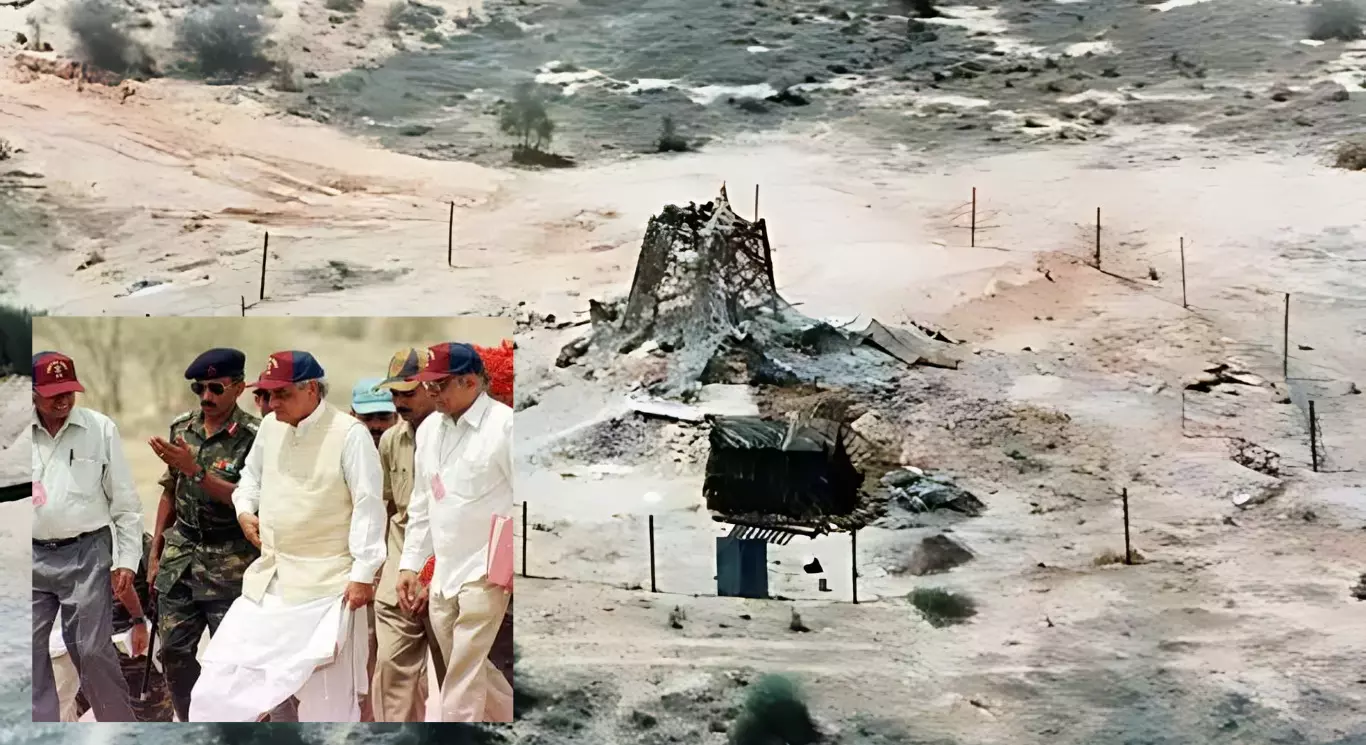Pokhran Nuclear Tests: A Look Back at India's Strategic Prowess and a Curious Case of Missing Vegetables

New Delhi: On this very day, May 11th, at precisely 10:30 AM in 1998, India etched a significant chapter in its strategic history with a series of five underground nuclear explosions in Pokhran, Rajasthan. This was not the first time the desert sands of Pokhran had witnessed such an event; the nation's first nuclear test, codenamed "Smiling Buddha," was conducted on May 18, 1974, under the leadership of then Prime Minister Indira Gandhi. The 1998 tests, codenamed "Operation Shakti," were overseen by the government led by Prime Minister Atal Bihari Vajpayee.
Pokhran, situated approximately 128 kilometers north of Jaisalmer and east of National Highway 125, and roughly 400 kilometers from the state capital Jaipur, was meticulously chosen for these critical underground tests. Its sandy terrain, remote location far from significant human settlements, and the inherent ability to maintain strategic secrecy made it an ideal site.
The preparations for "Operation Shakti" were extensive and shrouded in utmost confidentiality. Leading scientific minds of the nation, including Dr. A.P.J. Abdul Kalam, Dr. Raja Ramanna, Dr. Anil Kakodkar, and Dr. D. Rajagopalan, made multiple discreet visits to the site. Dr. Kalam was appointed as the chief coordinator for the project. The level of secrecy was paramount; so much so that even the then Chief Minister of Rajasthan, Bhairon Singh Shekhawat, was reportedly not privy to the impending tests.
In an intriguing subplot to this major geopolitical event, Chief Minister Shekhawat, during that period, was grappling with unusual complaints from party leaders regarding a severe and inexplicable shortage of potatoes and onions across western Rajasthan. This was particularly puzzling given that the harvest in districts like Jaisalmer, Barmer, Bikaner, Jodhpur, Pali, and Jalore had been exceptionally good. The vegetables, despite record production, had mysteriously vanished from the local markets.
The enigma of the missing produce was resolved only after the successful culmination of the nuclear tests: the substantial quantities of potatoes and onions had been diverted to the Pokhran test site.
Sources indicate that approximately 1,000 tons of potatoes and an equivalent amount of onions were buried underground at the designated test locations. This unusual measure was implemented based on the recommendations of nuclear experts. With five explosions planned, such a significant volume was deemed necessary. Scientists from the Defence Research and Development Organisation (DRDO) were tasked with procuring these vegetables. The underlying scientific rationale, as per research available at the time, suggested that potatoes and onions possessed properties that could help mitigate the effects of radiation.
The layers of potatoes reportedly served a dual purpose: anchoring the explosive devices securely within the sandy soil and, along with onions, acting as a bio-indicator. It was believed that onions would react visibly to the explosions – their color purportedly turning blue – serving as an immediate, albeit unconventional, sign of a successful detonation. In essence, the onions were employed as rudimentary, organic sensors.
The day following the tests, Prime Minister Vajpayee, accompanied by Defence Minister George Fernandes and Chief Minister Shekhawat, visited Pokhran to inspect the test site. It was reported that, thanks in part to the mitigating measures involving the potatoes and onions, there was no significant collateral damage or immediate hazardous radiation spread in the vicinity.
The 1998 Pokhran tests triggered a strong international reaction, leading to the United States and other nations imposing economic sanctions on India. However, Prime Minister Vajpayee's government stood firm, weathering the diplomatic and economic pressure.
To this day, the Pokhran explosion site attracts tourists and those interested in India's strategic history. Visitors to the region also often pay homage at the historic Balgadh Fort, a 14th-century bastion built by the Rathore kings of Marwar, and the revered temple of Deval Sati Mata, reflecting the rich cultural tapestry of the area that once played host to a pivotal moment in India's journey as a nuclear power.
